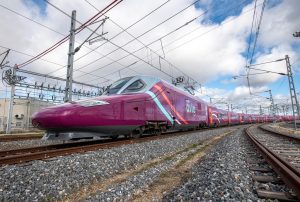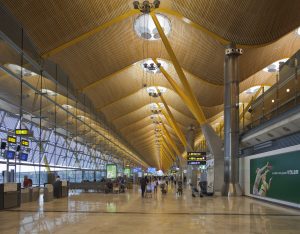 Adif has begun the public consultation on the construction of the high-speed rail connection with the Madrid-Barajas Adolfo Suárez airport, by publishing the announcement in the Official State Gazette BOE.
Adif has begun the public consultation on the construction of the high-speed rail connection with the Madrid-Barajas Adolfo Suárez airport, by publishing the announcement in the Official State Gazette BOE.
This is one of the first necessary administrative steps prior to the bidding for the works of the project and its subsequent execution.
Through this publication, the Spanish rail infrastructure manager is providing information on the process for the purposes expropriations and will consult the list of assets and rights affected by the execution of the works defined by the project.
The project covers the construction of a double-track standard-gauge railway between the T-4 terminal of the Madrid-Barajas Adolfo Suárez airport and the Madrid Chamartín Clara Campoamor station.
While this specific connection is being developed, work is being performed to enable in the short and medium term an access that, in a first phase and provisionally, will allow long-distance train traffic to be extended from Madrid Chamartín station to the airport. Until the line will enter commercial operation, the long-distance trains will share the lines with the Cercanías commuter trains. Currently, the airport has metro connection with the city centre station Nuevos Ministerios Madrid’s financial district, which is also providing rail and metro connections with the lines 6, 8 and 10. The Line 8 is the fastest route from the Terminal 2 and Terminal 4 to the Madrid centre.
 In addition, the city benefits a Cercanías rail link (C-1 line) between Chamartín station and T4 and to Atocha AVE high-speed train stations. Starting 2011, the authorities planned the construction of a double-track line which provides high-speed access directly from the aiport.
In addition, the city benefits a Cercanías rail link (C-1 line) between Chamartín station and T4 and to Atocha AVE high-speed train stations. Starting 2011, the authorities planned the construction of a double-track line which provides high-speed access directly from the aiport.
The development of a high-speed rail connection with the airport, which is now underway with the start of public information on the project, is part of Adif’s strategy and commitment to promoting intermodality between the different modes of transport and the role of the railwayin promoting sustainable, safe and connected mobility.
The project will receive European financing through the Next Generation EU recovery plan.
The project contributes to the achievement of the Sustainable Development Goals (SDGs), such as SDG 9, which has among its goals the development of reliable, sustainable and quality infrastructure, and SDG 11, which seeks to provide access to sustainable safe and sustainable transport. It also supporting the contribution to economic growth and employment (SDG 8) and the energy efficiency (SDG 7).
Share on:



